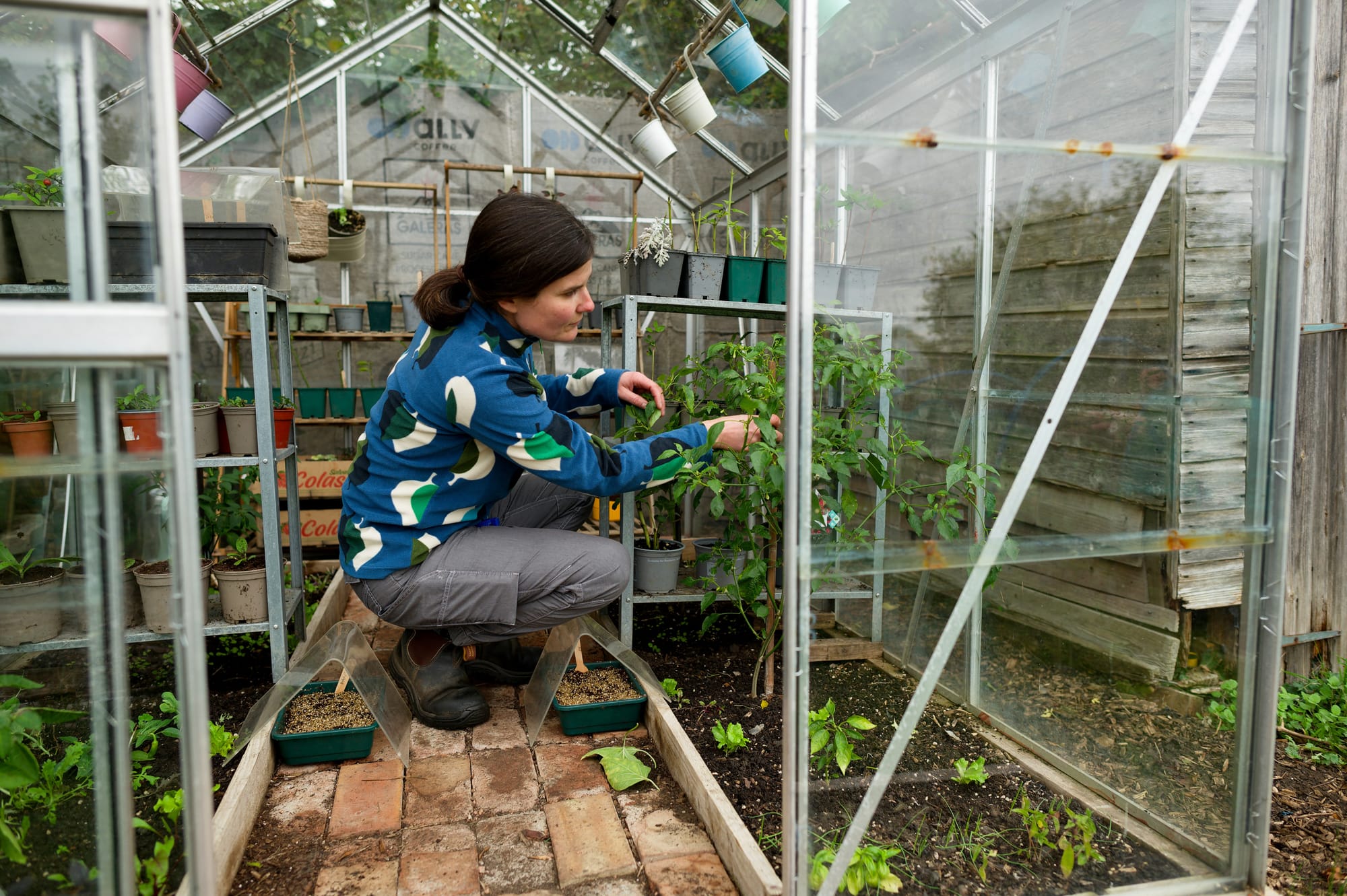How plants can help reduce flood risk
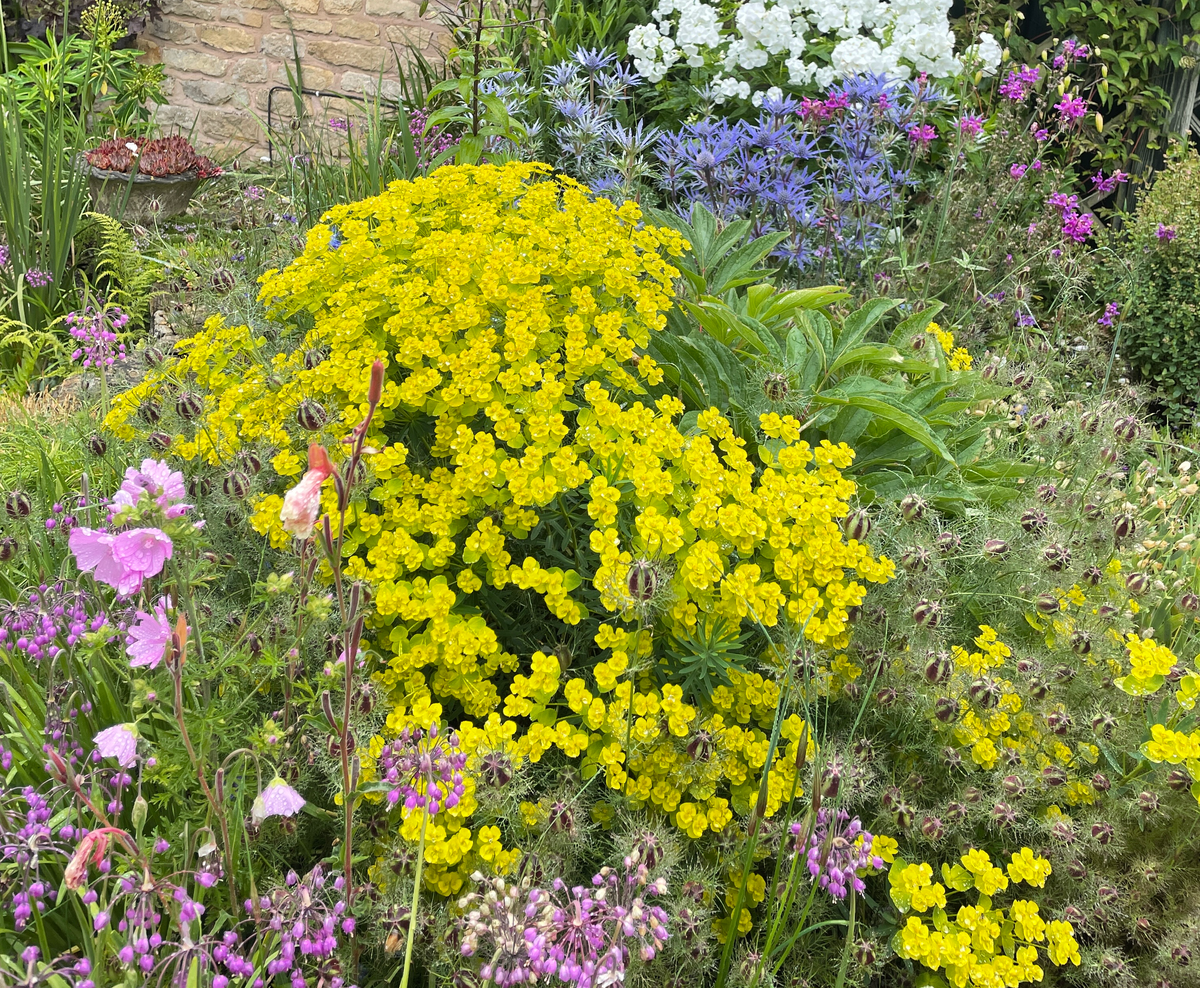
When I lived in Scotland, people often used to say to me “Don’t worry if you’re not happy with the weather, it’ll change in 15 minutes.” And they weren’t lying. It wasn’t uncommon to have all four seasons in one day!
Moving to Oxford, I assumed I’d enjoy more reliable weather. The reality is that everywhere in Britain, we’re now seeing more unpredictable weather patterns.
In the summer, I wrote an article on helping gardens cope with droughts after six months with next to no rain. But as we've seen recently, when the rain comes, it all comes at once, so I’m back here to share horticultural advice for dealing with long spells of rain and flooding, as we head in to winter.
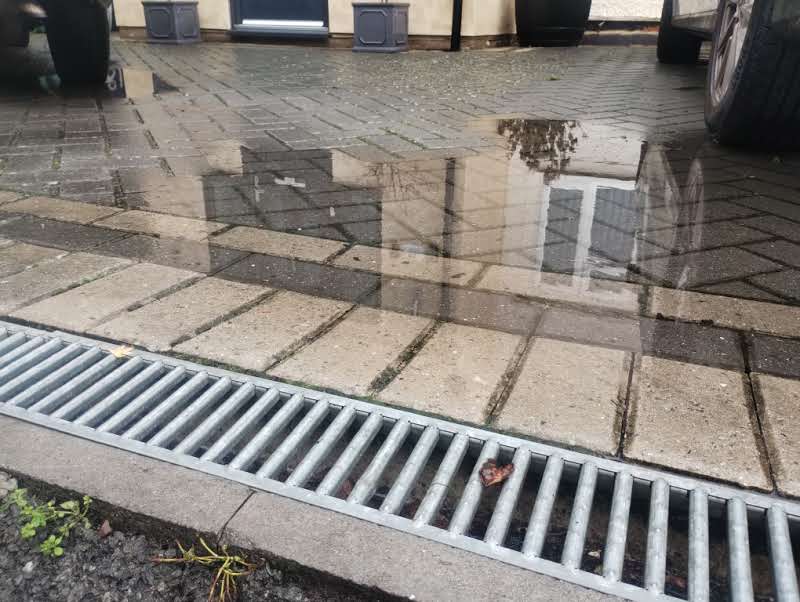
As a professional horticulturist, I’m of the view that plants have the amazing ability to solve many problems associated with modern life – they make us happier and healthier, they improve air quality in big cities, they provide shade in hot weather and reduce flood risk.
Storing water
It may sound obvious but, given that we’re used to seeing more regular, longer dry spells in spring and summer, it’s a good idea to store as much rainwater as possible when it does rain. Even though it can sometimes feel like we have less rainy weather than we used to (particularly in the South), it actually rains more on average, but in an all-or-nothing kind of way.
Water butts are useful for storing water, as are larger IBC type containers, old baths and bins – anything you can get your hands on or have the budget for. Site your water collection containers where they’ll be the most useful, for example near planters. And if you don’t like the look of a standard water butt, you can easily cover it with chicken wire, plant a clematis (sunny position) or honeysuckle (shady position) at the base, maybe pair that with an evergreen climber like variegated ivy, et voilà – you’ll have covered it with lovely foliage and blooms in no time.
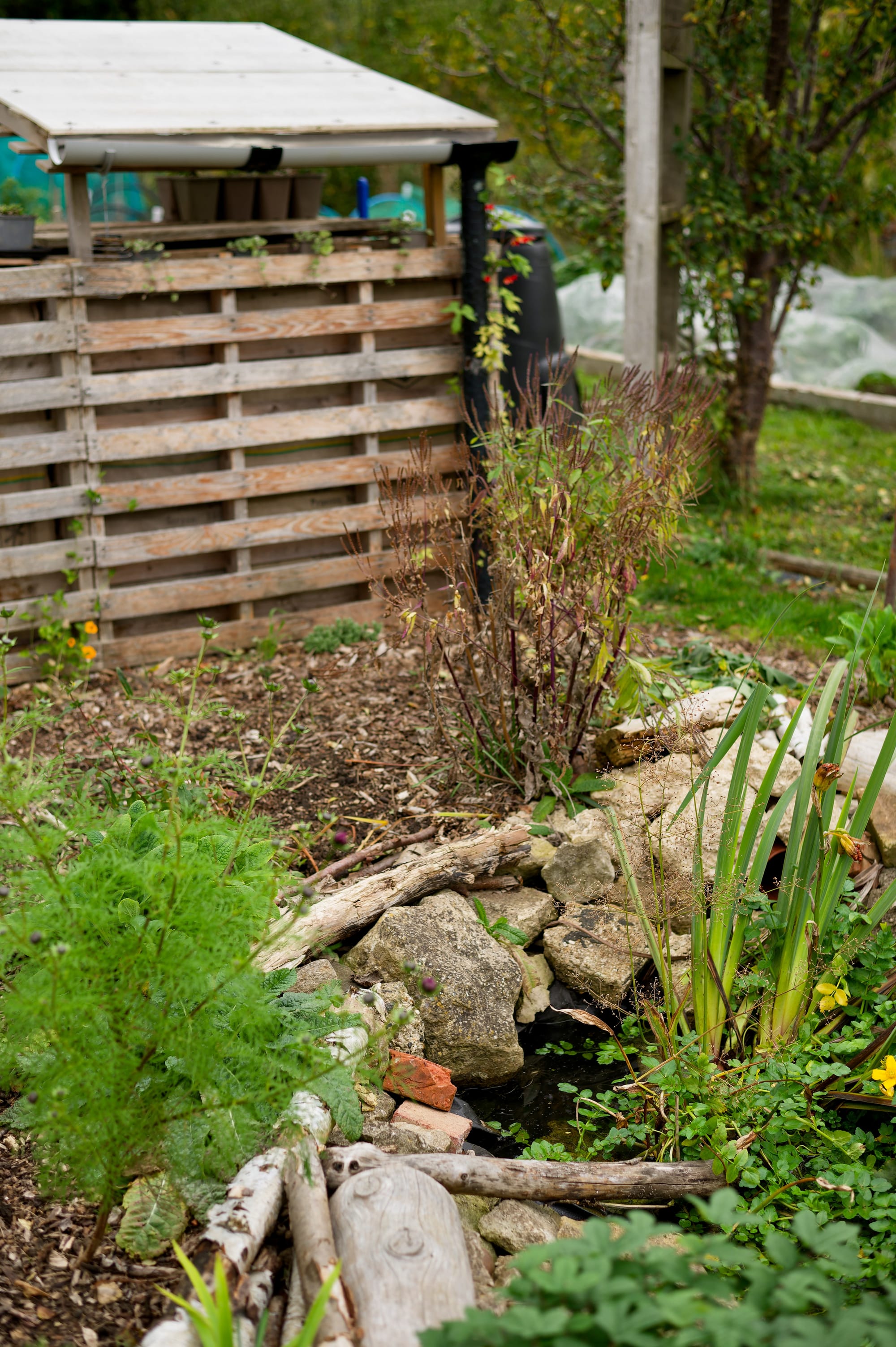
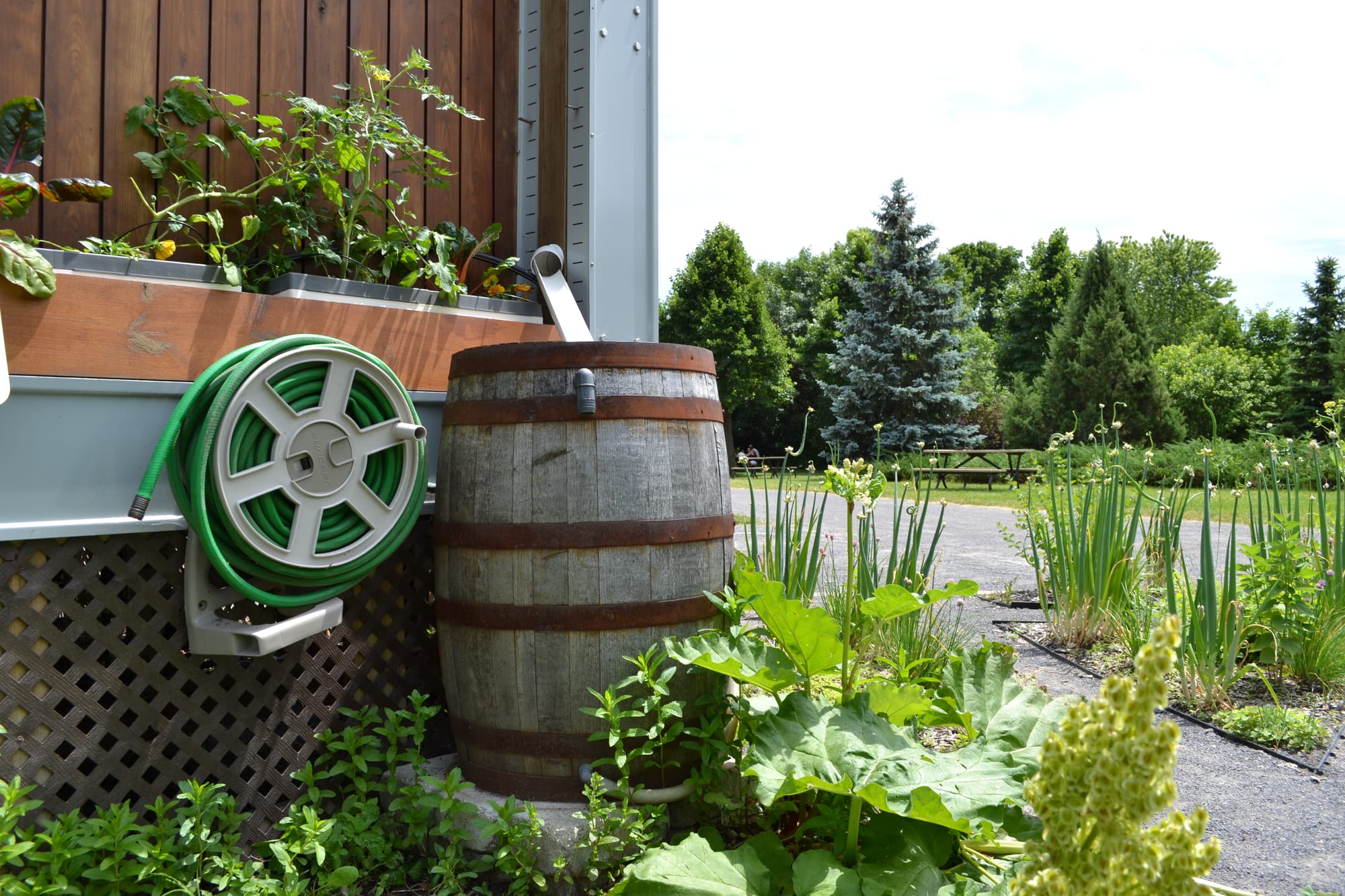
Water collection device leading to a pipe straight into a pond on Amandine's allotment (photo by Roger Close), or a more bucolic version of a classic water butt (Benoit Rochon at Wikimedia Commons, CC-BY 3.0).
Other garden features that help store rainwater are ponds, bog gardens and rain gardens. Adding a pond to your garden doesn’t mean sacrificing lots of space; you could simply repurpose a large container or an old sink (blocking the drainage hole), put in a few stones and aquatic plants and you’ll have a mini pond in an hour or two. Of course, if you are up for a larger pond, you’ll add a new dimension to your garden and welcome all sorts of wildlife (some of which will eat your slugs!) and I promise you, you won’t look back.
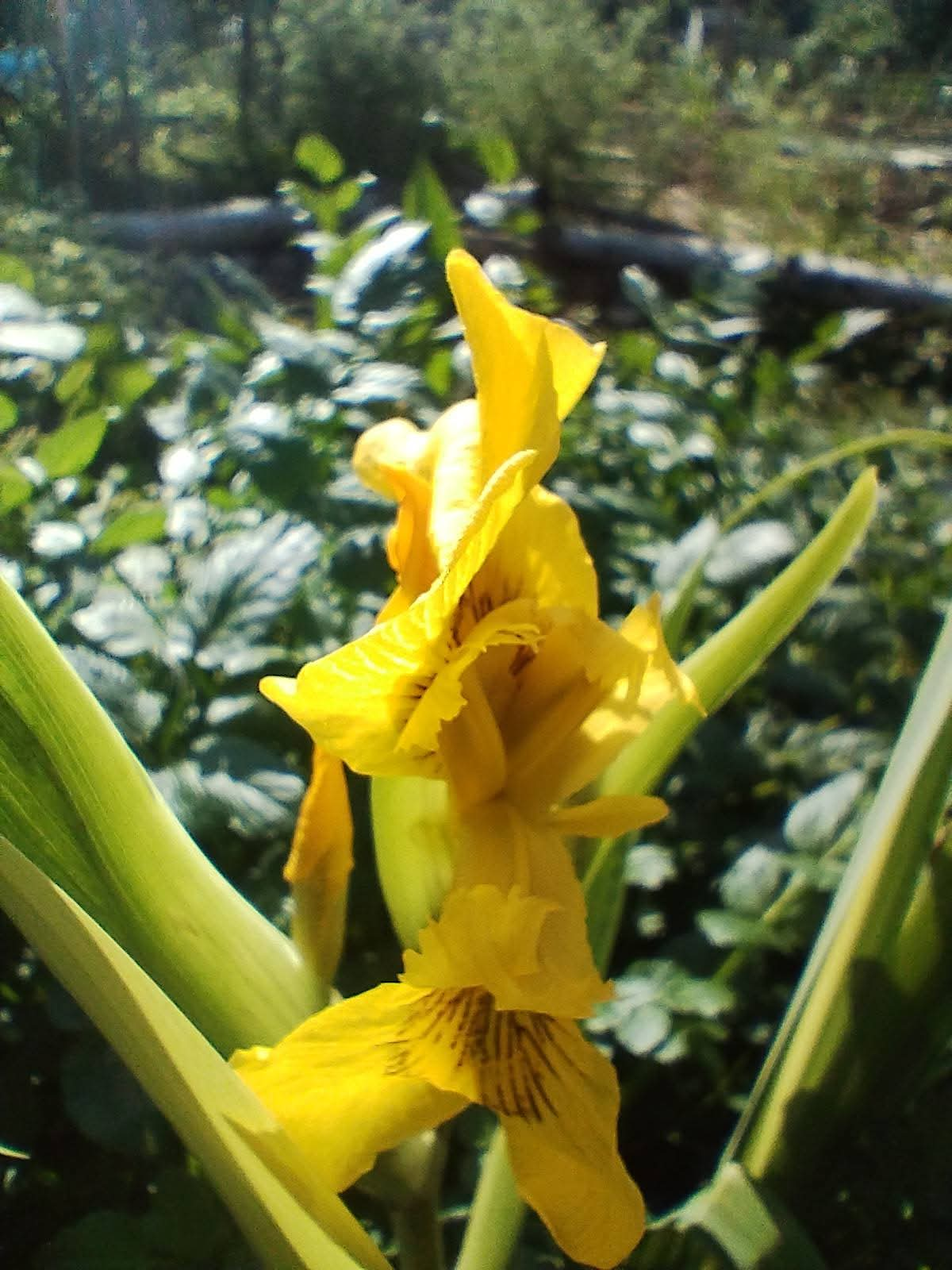
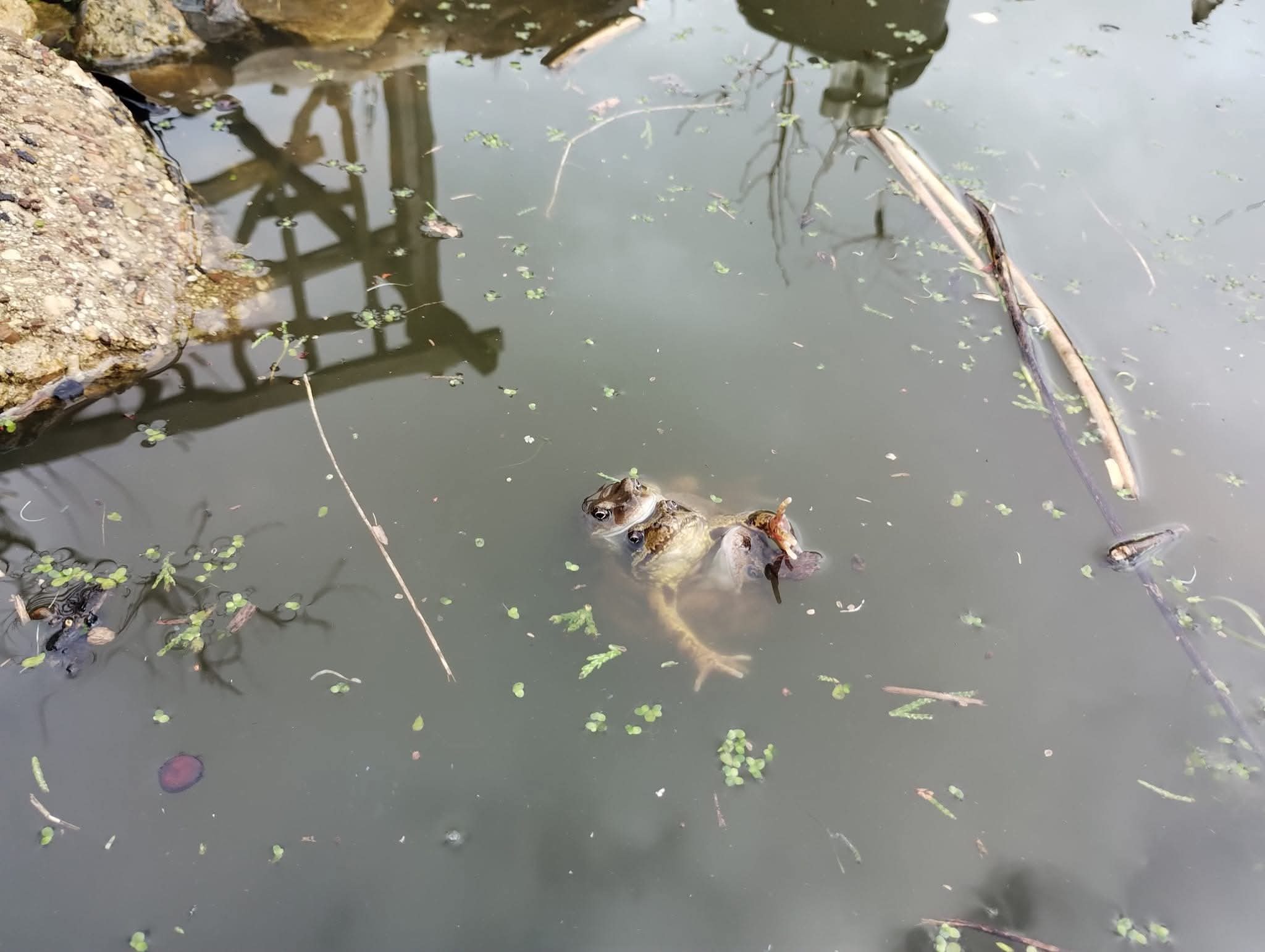
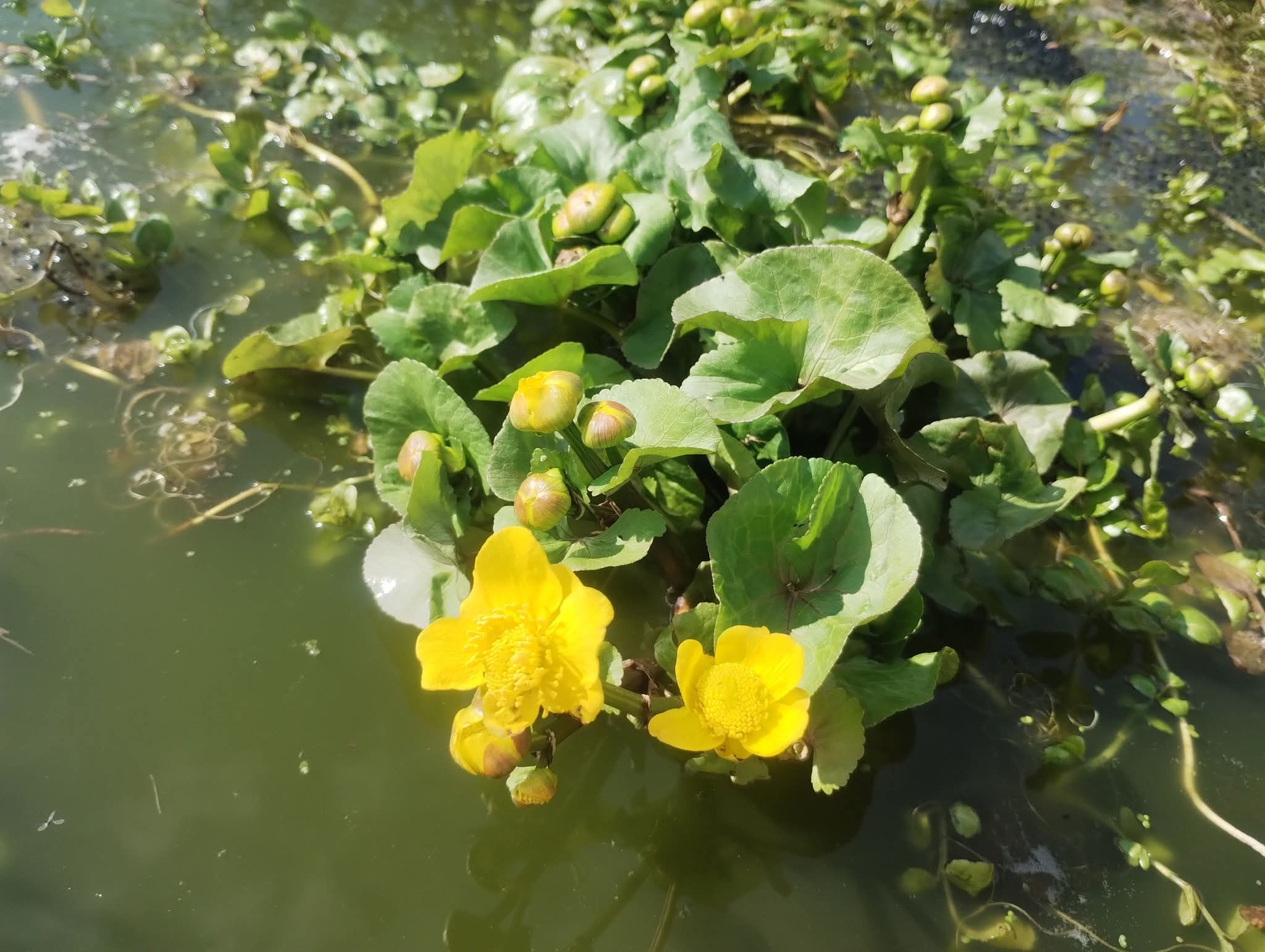
Pond dwellers: Spring-flowering pond plants - yellow flag iris, two very friendly frogs, marsh marigold.
Marsh marigold (Caltha palustris) is a beautiful marginal plant (i.e. a plant for pond edges). Water mint is a great oxygenator, and blue iris is a less invasive pond plant than its yellow cousin. Opt for pygmy waterlilies for smaller ponds. Bog gardens can be created at the edge of a pond to redirect excess water to it, which makes them particularly appealing if you have a leaky pond or if a part of your garden regularly gets waterlogged. Lobelia cardinalis (cardinal flower) has gorgeous red flowers and willow (Salix) and dogwood (Cornus) will enjoy wet conditions and provide colourful stems in the winter months. The wildlife pond on my allotment used to dry out quickly in the summer so, last year, I created a system to feed it with rainwater – now, I never have to worry about topping it up and it’s been great seeing the pond fill up naturally and quickly during wet spells.
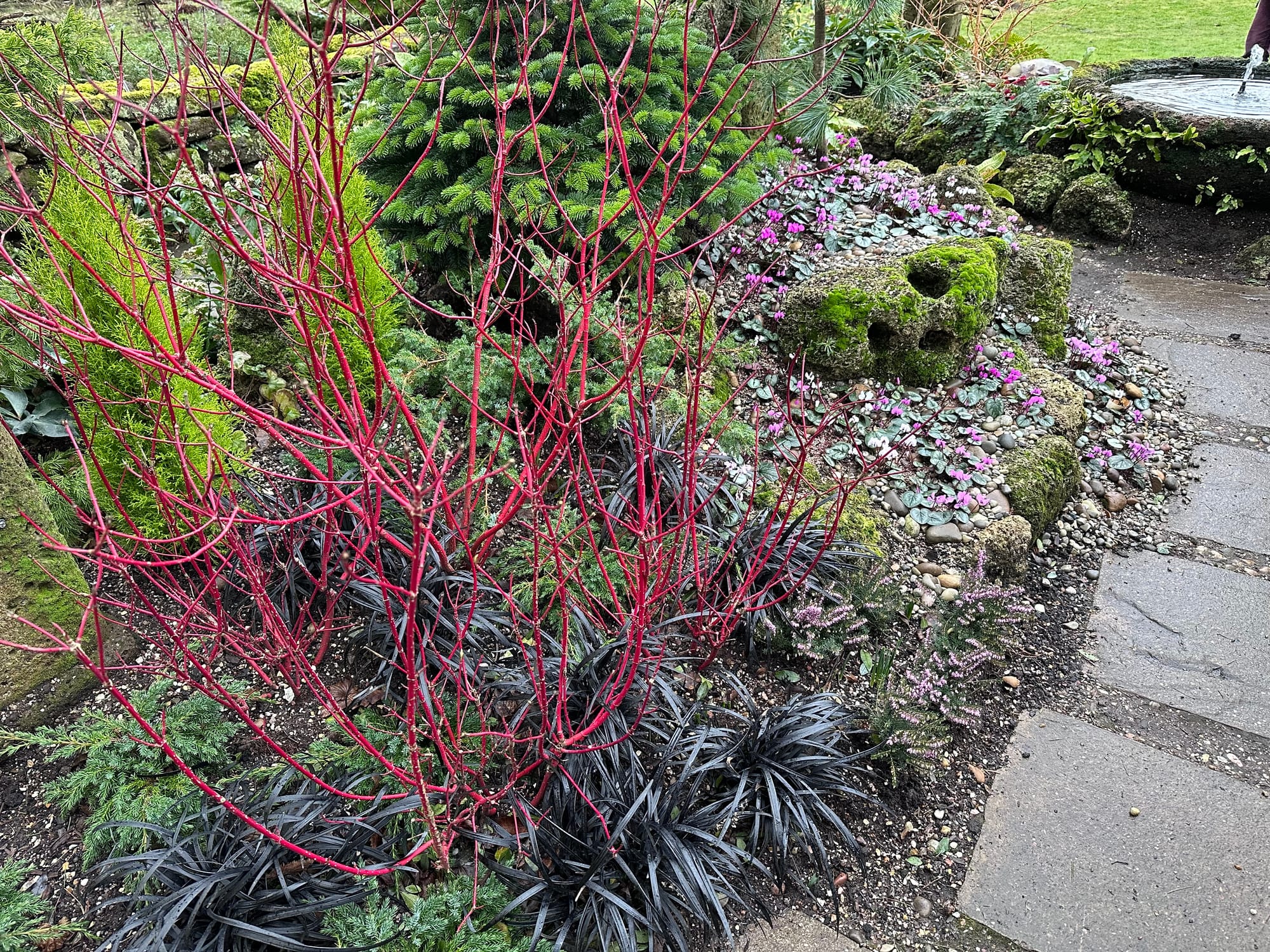
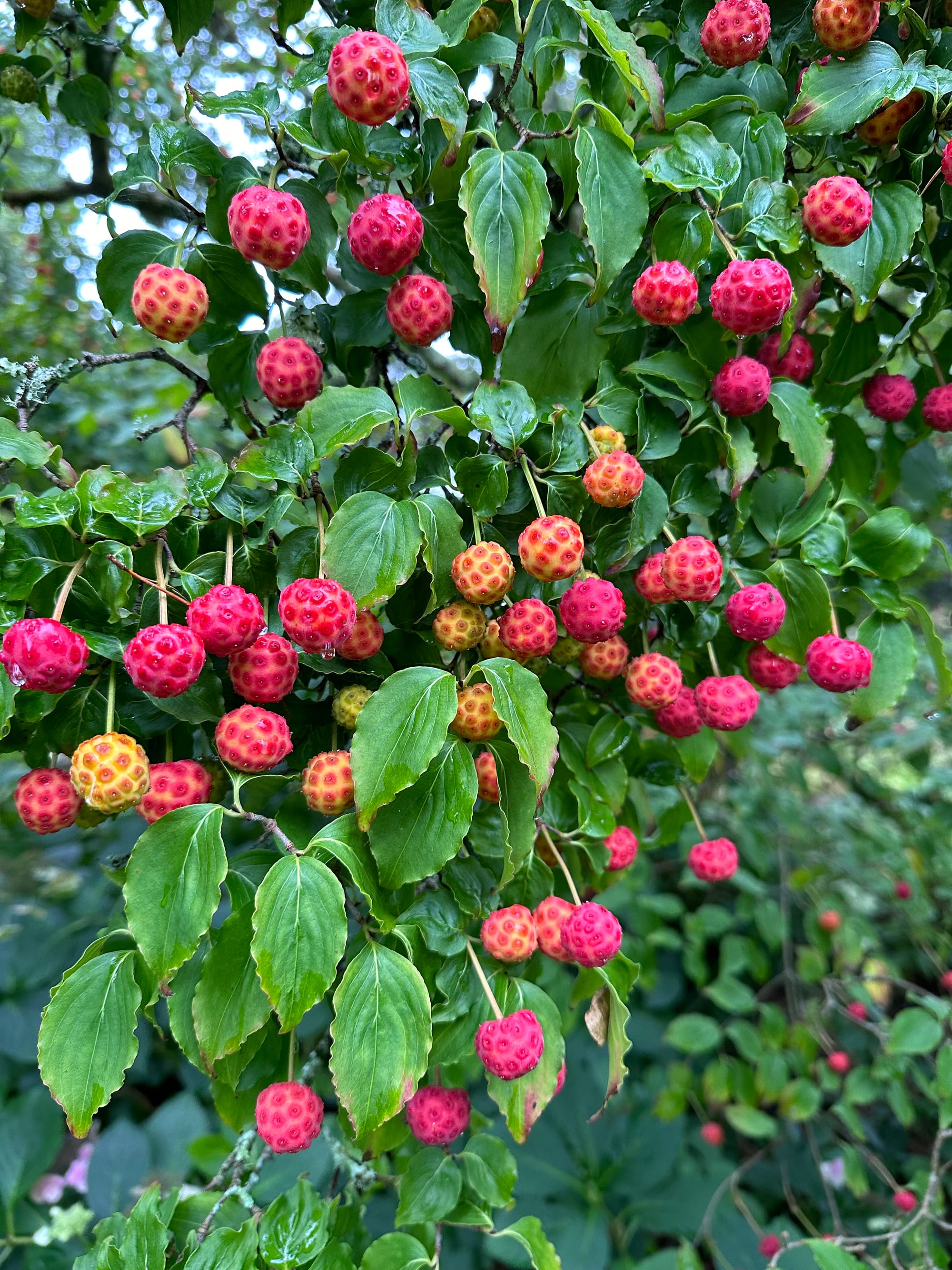
Dogwood / Cornus, a useful shrub for wet soil - some Cornus have colourful stems in the winter and Cornus kousa produces pretty edible fruit (Celia Sawyer)
Plant selection
In my drought article, I referred to Beth Chatto’s motto ‘Right plant, right place’. If parts of your garden regularly get waterlogged, the best thing you can do is to choose plants that enjoy boggy conditions. Trees like the sweet gum (Liquidambar styraciflua - which has gorgeous autumn foliage), shrubs like Magnolia or Hydrangea are good choices.
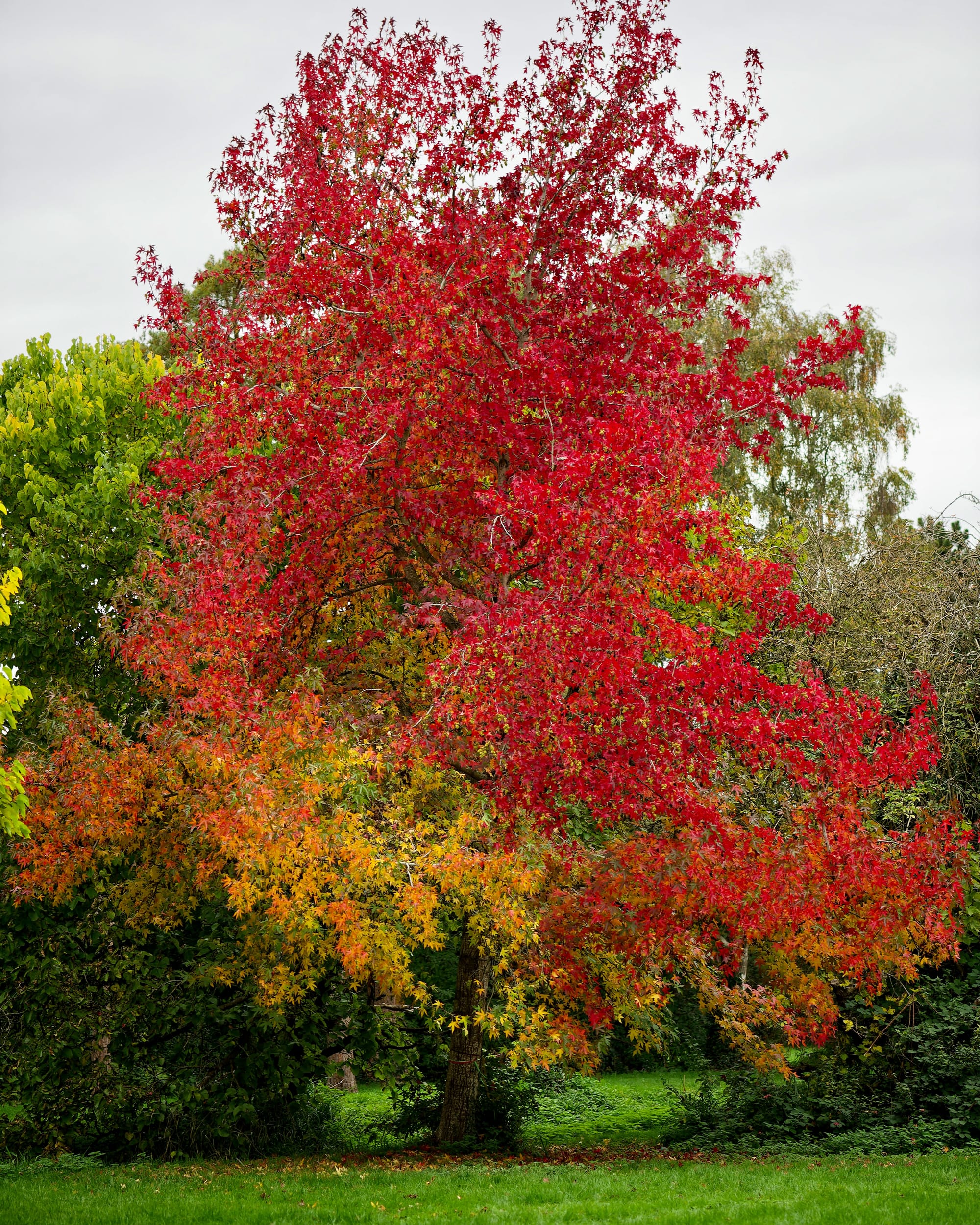
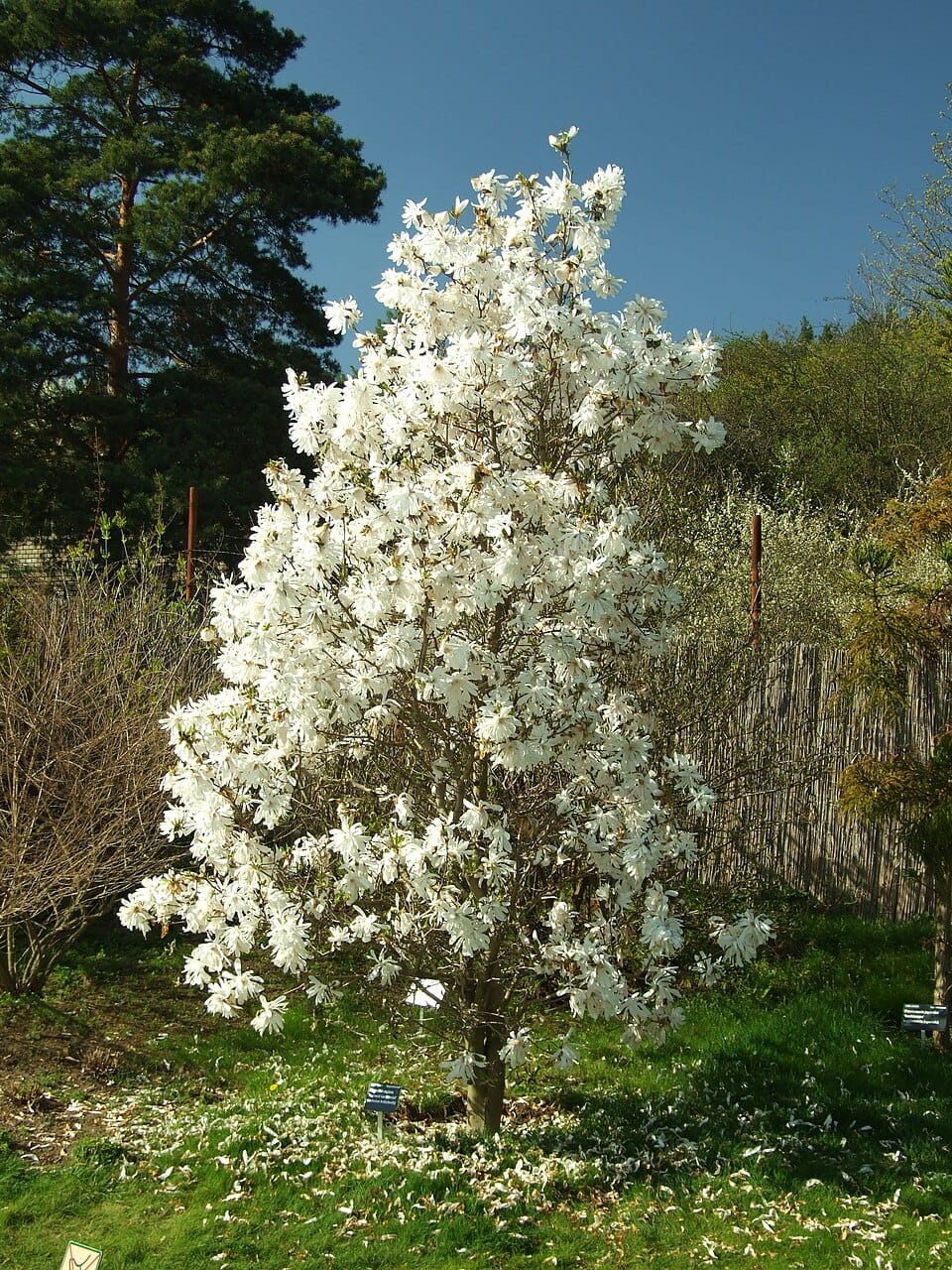
Liquidambar styraciflua in Florence Park (photo by Roger Close), Magnolia stellata (Aktron / Wikimedia Commons CC-BY 3.0)
Perennials like Iris sibirica, Euphorbia, Geranium and bulbs like Agapanthus, Camassia and Cyclamen cope with seasonally wet and dry soils.
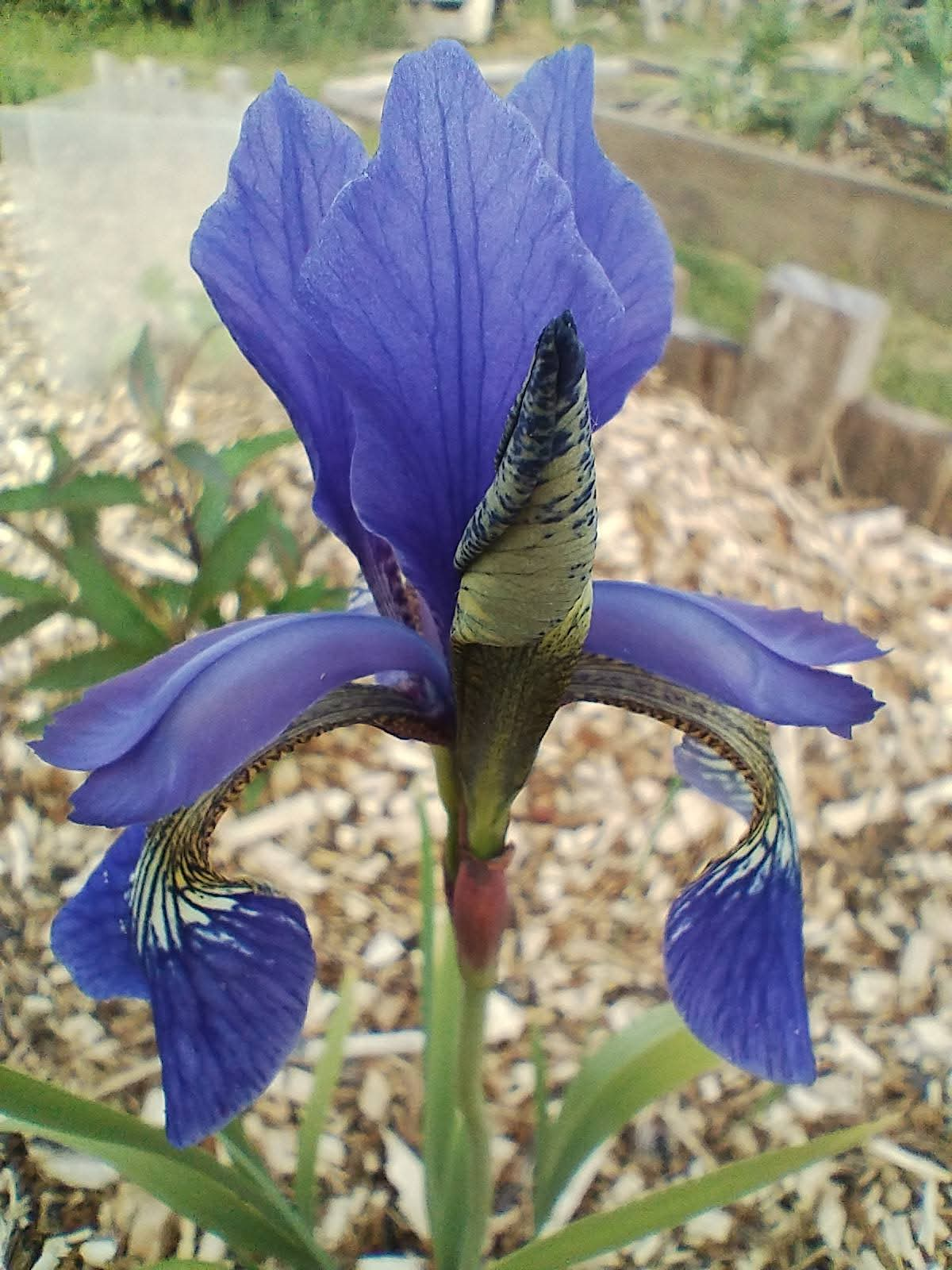
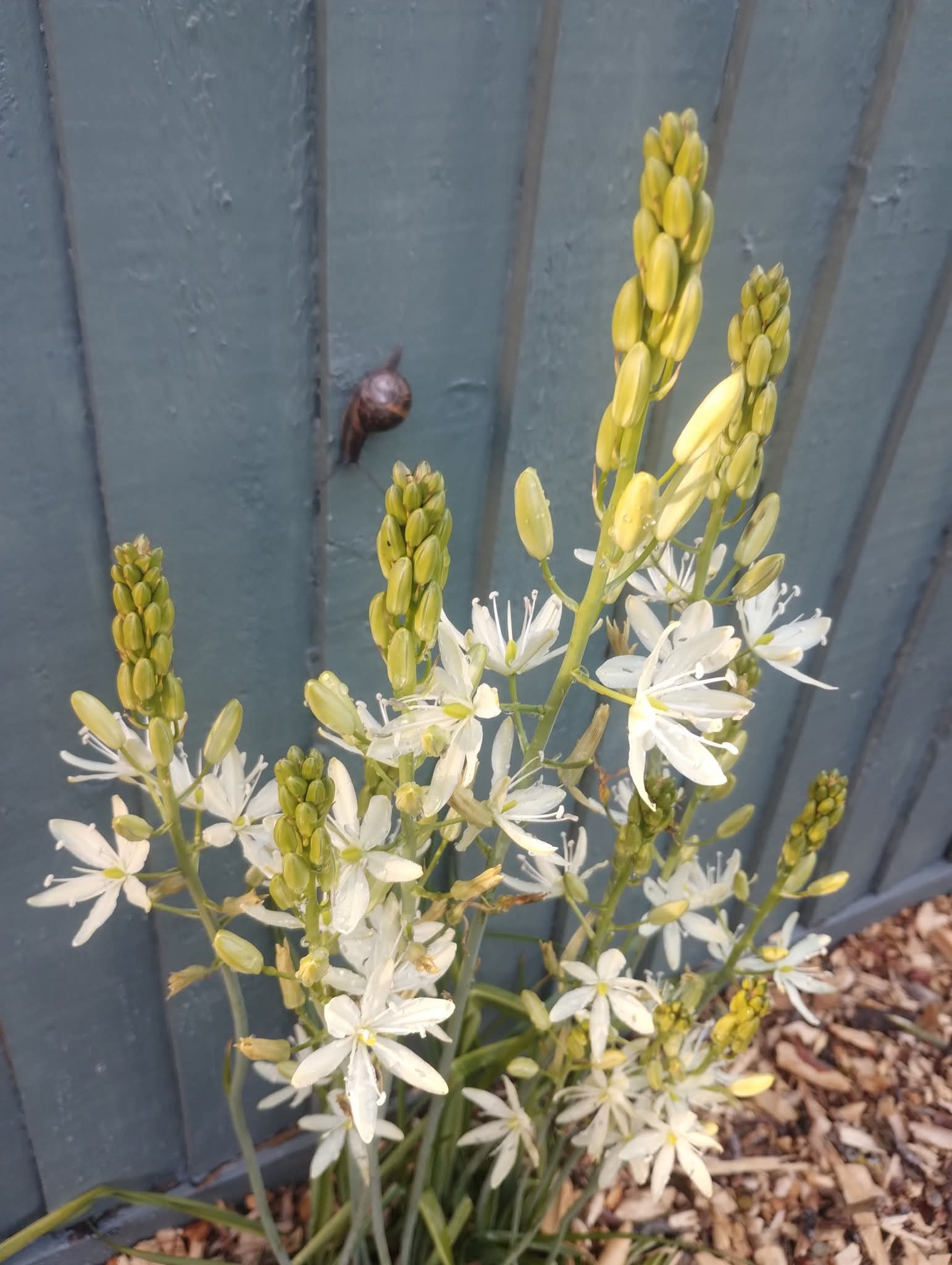
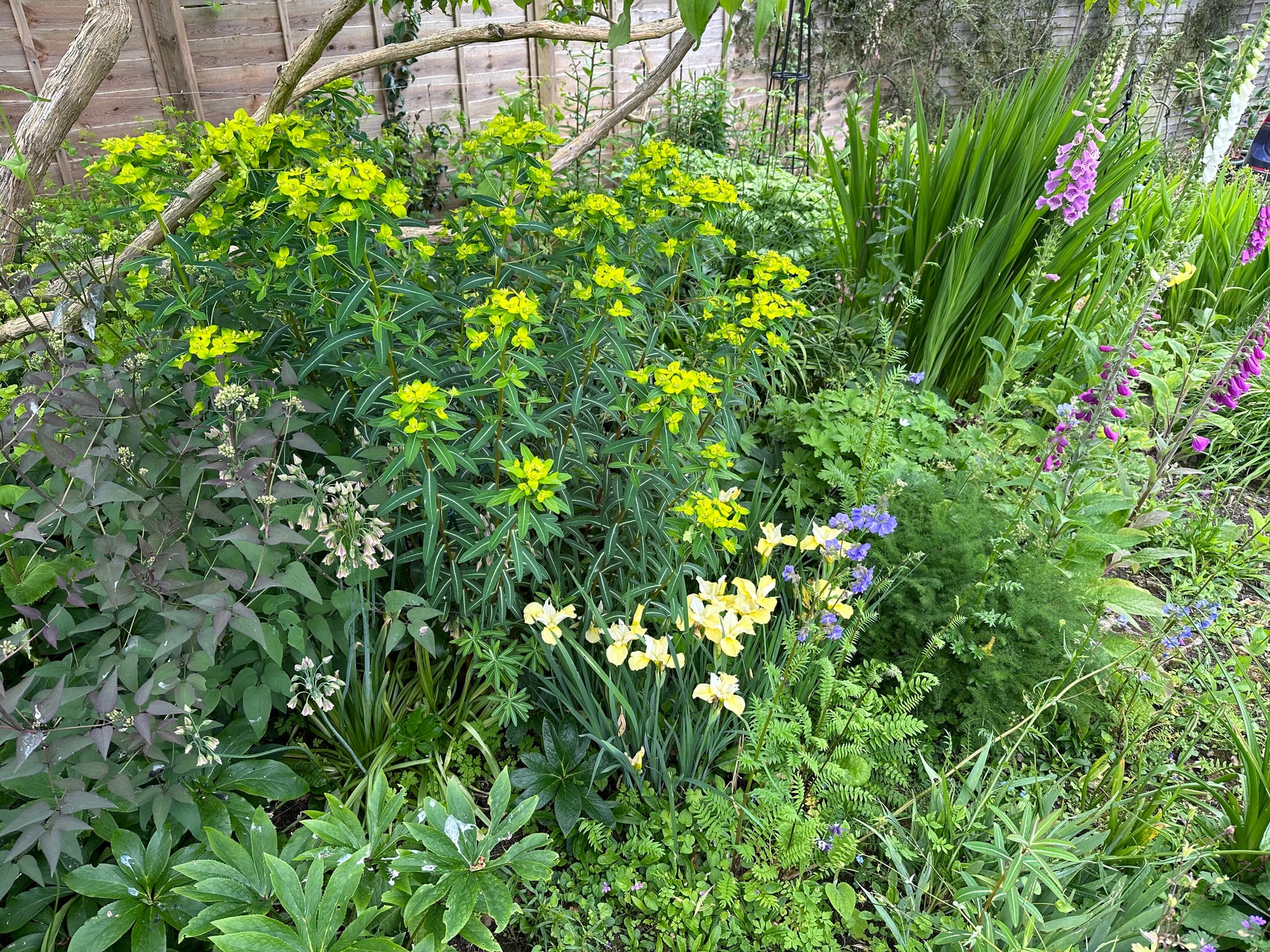
Versatile perennials that can cope with both wet and dry soils: purple Iris sibirica, and Carnassia. The bright flower bracts of Euphorbia add cheerfulness to any garden (photo credit Celia Sawyer)
Ornamental grasses are great, and no garden should be without them – good-doers include sedge (Carex), Calamagrotis, Hakonechloa, Miscanthus and Molinia. I love black mondo (Ophiopoggon planiscarpus), a black clump-forming grass that contrasts beautifully with green, variegated and purple foliage and works a treat when paired with hellebores, cyclamen and snowdrops/snowflakes in winter gardens. Trees are especially helpful as their roots soak up moisture from the soil, whereas bulbs have the ability to store water during wet weather.
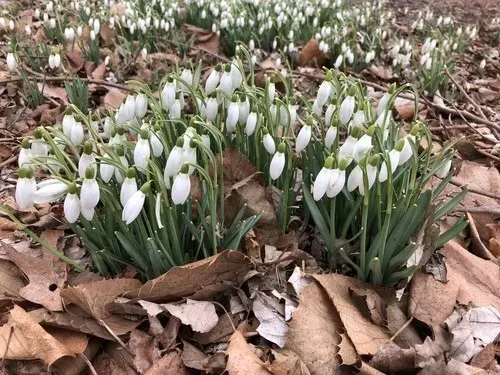
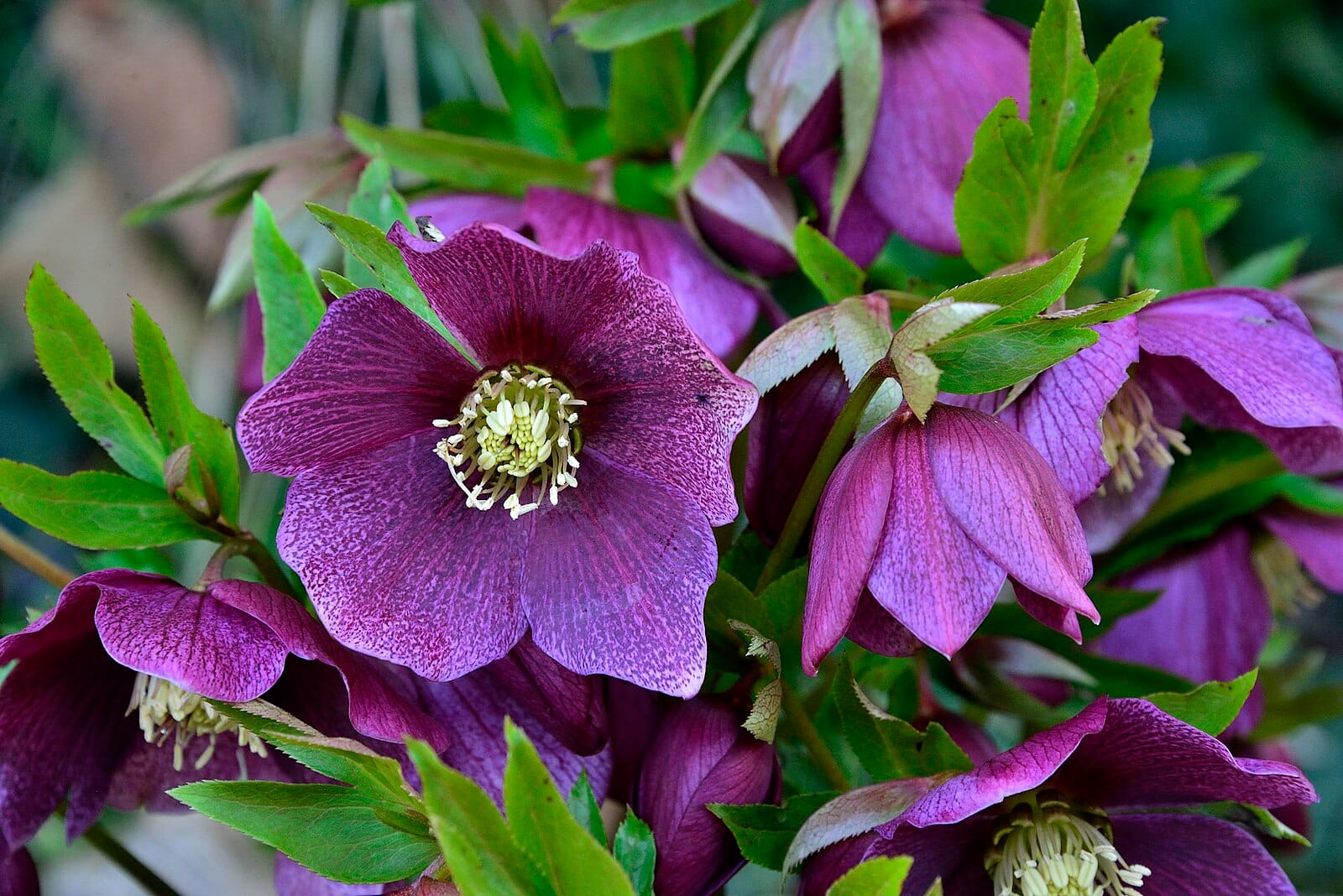
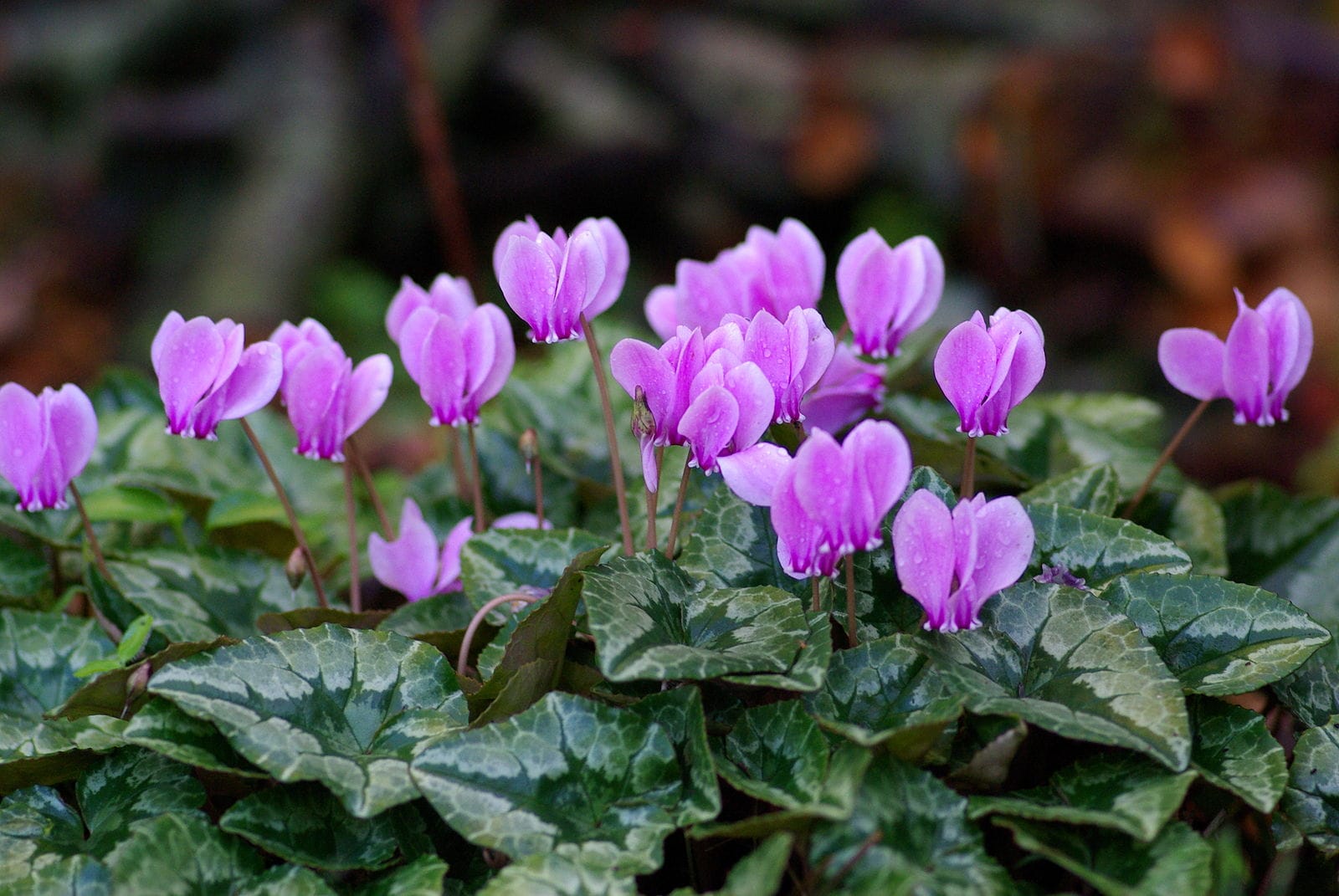
Snowdrops can be added to any size garden for winter colour (photo by sclerobunus, used under CC-BY-SA 4.0, cropped and compressed from original); hellebore (Wikimedia Commons CC-BY 3.0); Cyclamen hederifolium (Wikimedia Commons CC-BY-SA 3.0)
If you have a large expanse of lawn in a wet shady spot, chances are it won’t enjoy being regularly waterlogged as grass prefers free draining fertile soil. You’ll probably end up with moss or lawn weeds that like wet feet like creeping buttercup. You could spike your lawn and add sharp sand and topsoil or you could sow an alternative ground cover like white clover. If you’re feeling brave, you could shrink or get rid of your lawn and introduce better-suited plants, a bog garden or porous landscaping like gravel.
Landscaping choices
On the topic of landscaping, many front gardens have been paved over, often to provide off-street parking or to make them low-maintenance. The problem is that removing greenery and covering soil with impenetrable surfaces are the main causes of increased flood risk, with one in six homes in the UK at serious risk of flooding. If your garden has existing paving, you don’t have to start from scratch – even lifting a few slabs, adding a mix of compost and gravel and plants that love free-draining soil (e.g. Verbena officinalis ‘Bampton’, Alchillea millefolium/common yarrow, and Eryngium) will improve things.
For concreted front gardens, adding planters is an easy, budget-friendly option – the larger the better, but every little helps. The plants in containers will absorb rainwater through their leaves and roots, and the compost will also soak up some of the water, which will reduce the overall water that lands on hard surfaces and ends in drains. Corten steel is an excellent long-lasting material for planters: it looks great in urban settings, doesn’t rot like timber, doesn’t absorb moisture like terracotta and doesn’t have a negative environmental impact like plastic. Make sure you go for good compost with added grit for drainage and of course, remember to choose plants that are suitable for containers.
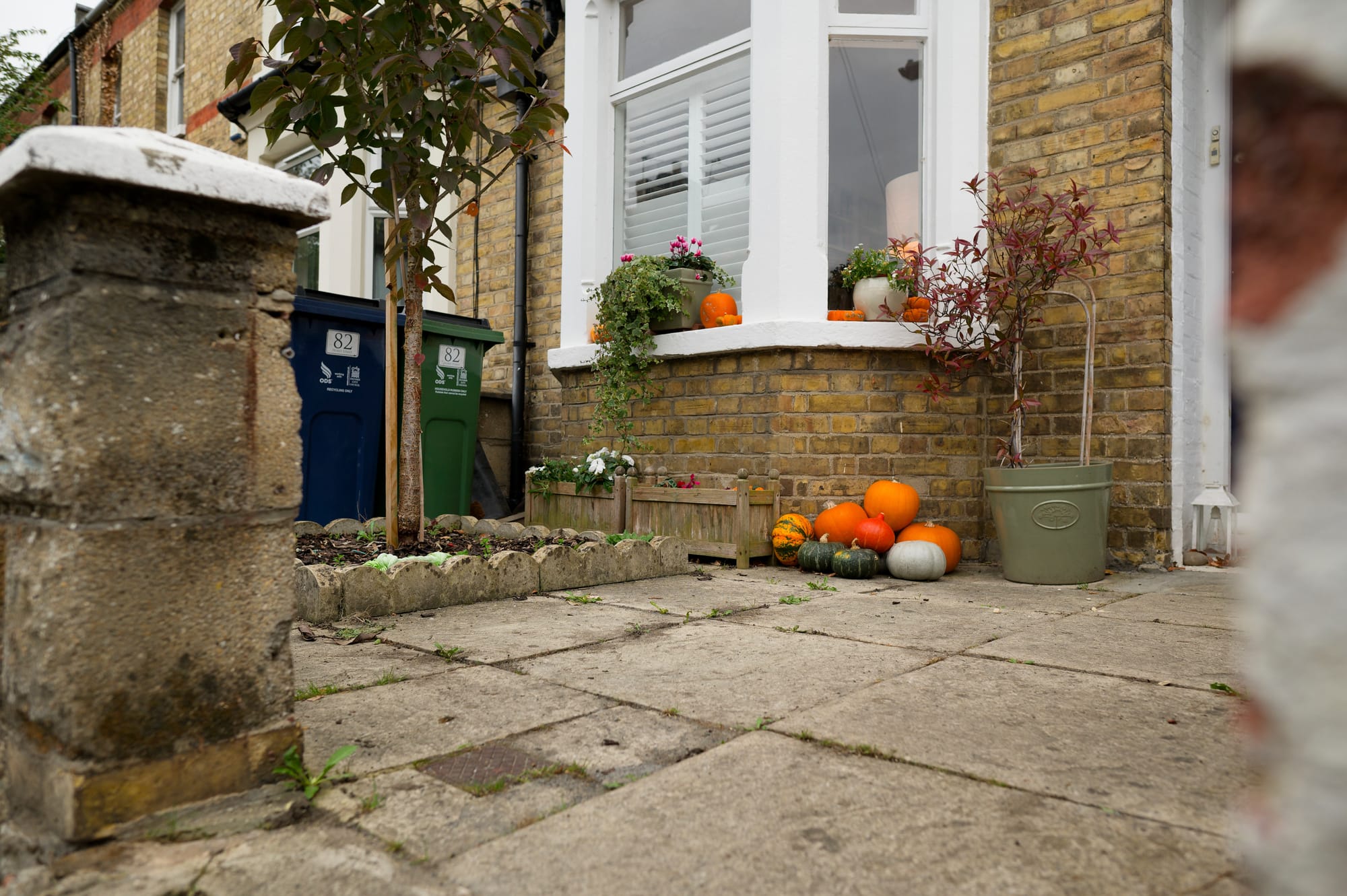
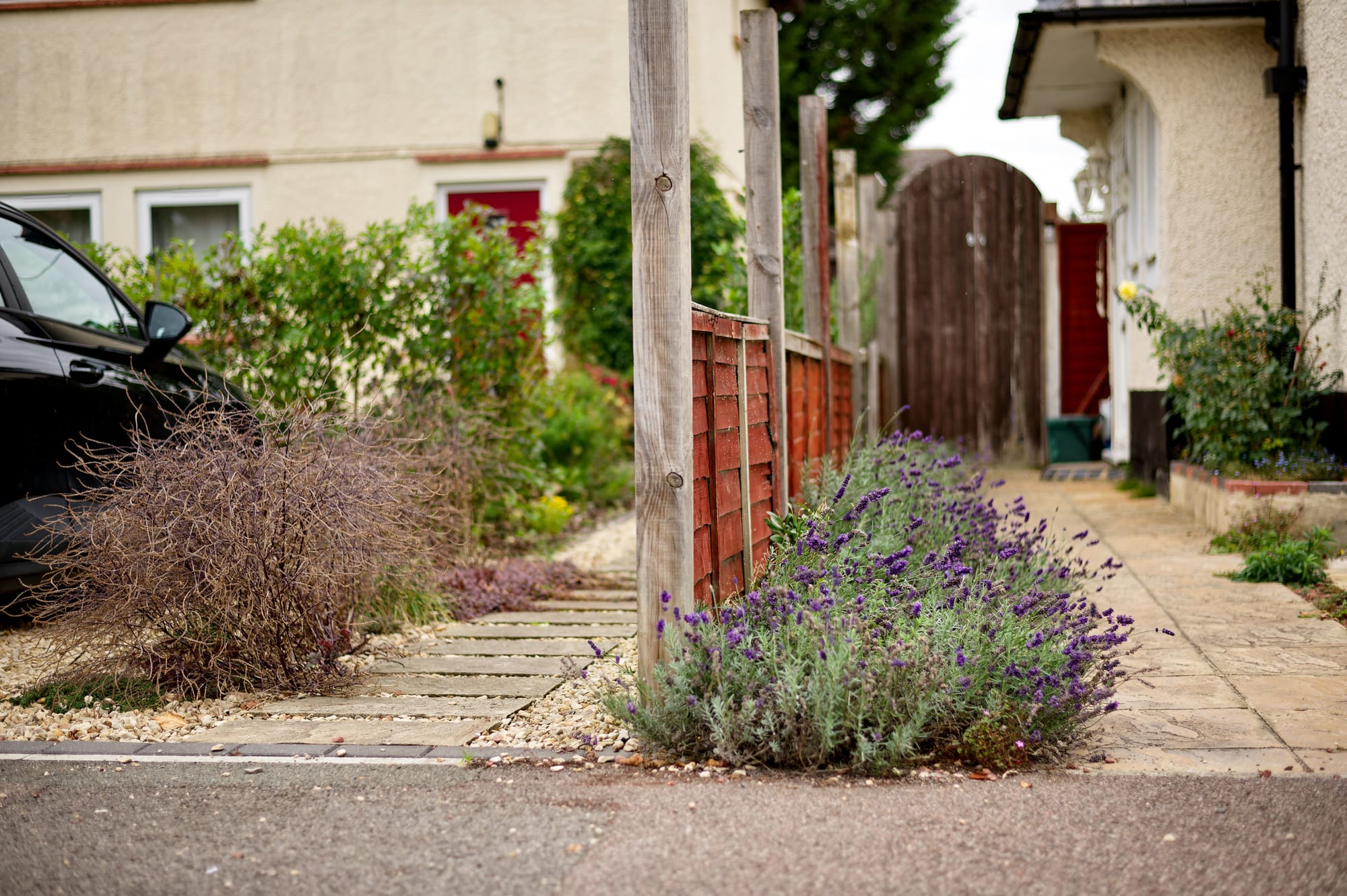
Gravel is more permeable than paving, but planting in paving can help (photos by Roger Close)
If you’re concerned about parking, simply selecting permeable paving materials when surfacing your parking space can make a big difference. And if you’re lucky to have a traditional front garden with greenery, keep it that way. There are lots of solutions to incorporate parking and make a green front garden low-maintenance as well as good for your mood and the environment. Check this RHS page for design inspiration or ask a professional horticulturist for design, planting and maintenance advice.
Amandine Lepers-Thornton is an RHS-qualified horticulturist based in Florence Park – her services include garden coaching, gardening classes/workshops and plant sales. She posts plant recommendations and gardening tips on her Facebook page (Amandine – Oxford Garden Coach) and can be contacted on amandine.oxfordgardencoach@gmail.com.
